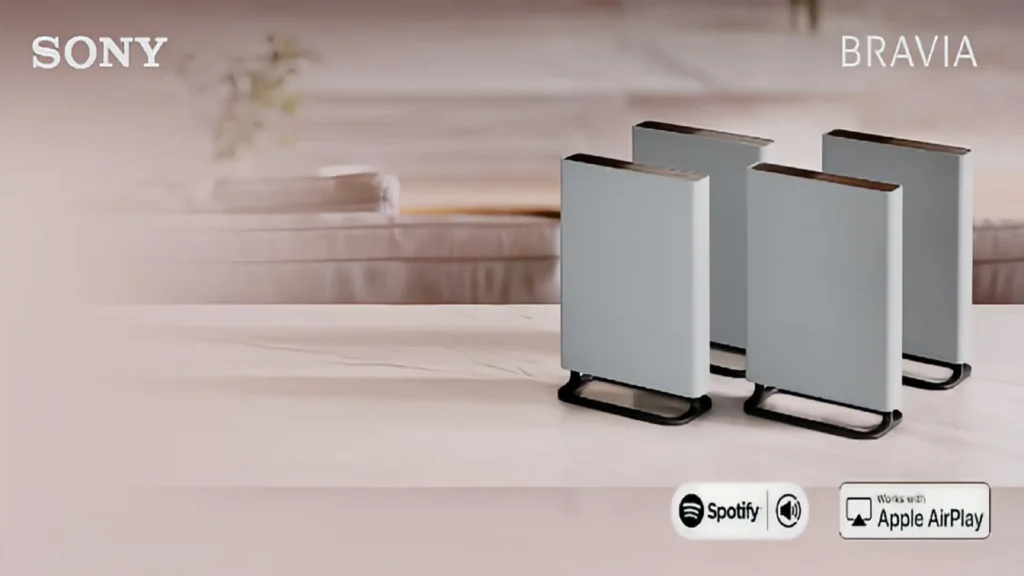You’re walking down a street. You hear a soft beep. Then, floating arrows appear in your vision. They guide you without needing your phone. This isn’t a scene from a sci-fi film. It’s what the Rayneo X2 glasses are built to do.
They promise more than just cool effects. These glasses aim to change how we interact with the world around us. And they want to do it without holding a screen or touching a button. The big question is—do they really work?
Screens pull us in. Phones demand our eyes. We keep checking, tapping, swiping. Rayneo X2 wants to break that loop. It lets you stay aware of your surroundings while still getting information.
You care because this could be the start of a shift. A shift away from screens in your hand to screens in your vision. These glasses are trying to be more than a gadget. They aim to be your new assistant, guide, and camera.
And yes, this thing is packed with features. Some sound too futuristic to be real. But they’re already working in real time. Let’s dig in.
What Exactly Are Rayneo X2 Glasses?
Rayneo X2 are smart augmented reality glasses. You wear them like normal glasses. But they show digital content right in your view. This could be text, photos, maps, or live captions of people talking.
The key is how it works. It doesn’t block your view. It adds to it. Think of it as extra information floating in front of you while you still see the real world. These aren’t virtual reality goggles. You stay present.
You don’t need to hold anything. Everything shows up right where your eyes are looking. It sounds impossible, but it works.
The first thing you’ll notice is the build. Rayneo X2 glasses look thicker than standard glasses, but not strange. The weight is slightly more, but they don’t feel uncomfortable. You can wear them without feeling like you have a machine on your face.
Inside, it’s loaded with parts. There’s a microLED display that delivers sharp visuals. You can see them clearly, even under sunlight. There’s a built-in speaker that uses bone conduction—so only you can hear it. The camera sits in the front but is discreet. The whole frame hides the tech well.
You don’t see wires. You don’t need attachments. Everything’s inside the frame. That alone makes it feel futuristic.
What Can These Glasses Actually Do?
Let’s get to the features. First up—translation. You can look at someone who’s speaking a different language, and the glasses will show real-time captions in your language. You see what they’re saying without needing to use your phone. No app switching. No delay.
Next is navigation. Arrows appear right in your path, telling you where to turn or walk. If you’re biking or walking, it keeps your hands free and your eyes on your route.
There’s also a camera for quick photos and videos. You tap the side of the glasses, and it captures what you’re seeing. That means no missed shots and no fumbling with your phone.
The glasses have a smart assistant built in. You talk to it. It hears your voice clearly and responds fast. You can ask for directions, call someone, or check the weather—without pulling out your phone.
The assistant speaks back through bone conduction. You can hear it, but others around you won’t. That’s a big privacy win. And it means no earbuds needed.
This kind of voice-first control makes it feel very personal. You’re not just wearing a screen. You’re wearing something that listens and helps on demand.
Here’s a feature that seems unreal: face recognition. If someone is saved in your contacts, and you see them in real life, their name can appear in your view. That’s wild. You no longer have to guess if someone looks familiar.
There’s also object and landmark recognition. Look at a building, and the glasses can tell you what it is. They can pull up details, history, or directions—automatically. It’s the internet, but placed right into your world.
This is the point where it feels like science fiction. But it’s working today.
Battery is always a concern with new tech. Rayneo X2 lasts about 3 to 5 hours of active use. That’s not a full day, but it’s enough for trips, meetings, or events. You charge it through a USB-C port, and it supports fast charging.
There’s also a low-power mode that lets you stretch the usage if you’re only reading captions or checking quick info. It’s not perfect, but it’s better than you’d expect for glasses doing this much.
You’ll still need to plan your usage. But you won’t feel limited unless you expect it to replace your phone completely.
Wearing a camera on your face isn’t normal. People notice. Some feel uncomfortable. Rayneo X2 tries to address that. When the camera is recording, a clear LED light turns on so others can see it’s active.
Still, it raises questions. Can others trust what you’re doing? Will places ban them? Can you walk into schools, banks, or offices while wearing them? These questions don’t have full answers yet.
Tech moves fast. Social comfort moves slow. That’s a gap Rayneo will have to navigate.
One Feature That Changes Everything
This might be the most helpful feature. Real-time captions mean anyone hard of hearing can follow conversations easily. In meetings, crowded cafes, or loud events, the glasses show you what others are saying—instantly.
You don’t need to read lips or struggle with unclear words. This opens up huge possibilities for accessibility. And it works well. It’s fast, accurate, and displayed where you can read it comfortably.
This isn’t just cool. It’s meaningful. For some, it could be life-changing.
You might think this is all for fun. But it’s not. You can read texts, get alerts, check your schedule, or take quick notes. All through your glasses.
It helps you stay connected without being glued to a screen. The best part? You stay aware of your surroundings. It makes tech feel less distracting and more useful.
This isn’t just a fun gadget. It’s a serious tool that fits into daily life.
Let’s be clear. This is early-stage tech. It works. It’s not broken or laggy. But it’s not ready for everyone just yet.
Some apps are still in testing. Some features depend on your country or region. Updates are coming. The company is improving the experience constantly.
If you want something polished and fully mainstream, wait. But if you enjoy being early, this is your moment.
Right now, Rayneo X2 works best with Android phones. It connects through an app, and many features need that link. iPhone users can use it too, but support is limited. That could change with future updates.
If you use Android, you’re fine. If you’re on iPhone, check the latest status before buying.
They cost around $899. That’s not cheap. But look at what you’re getting—AR display, camera, live translation, navigation, and more. It replaces or reduces the use of several gadgets.
If you’re buying this to explore the future of wearable tech, the price matches what it offers. If you’re just curious, it might be better to wait.
Yes, more than expected. The glasses don’t pinch or press hard. They’re heavier than normal ones, but the weight is well-balanced. You can wear them for hours without needing a break.
For people with prescription glasses, there are options to fit lenses. The brand supports clip-ons and inserts. It takes a little setup, but it works.
How Does It Compare to Other Smart Glasses?
Let’s compare. Google Glass failed to go mainstream. Meta’s Ray-Ban glasses are focused more on photos and calling. Rayneo X2 is trying to be fully AR-ready.
That’s a much bigger step. And right now, they’re leading that race. They’ve moved from ideas to actual working products.
You don’t need a manual. The controls are simple—tap, swipe, or talk. The app walks you through setup. Within a few hours, you’ll be using them without thinking.
The assistant understands natural speech. You don’t have to memorize commands. The learning curve is shallow, and the rewards are big.
People will look. They might ask questions. Some may be curious. Others may feel uneasy.
Smart glasses are still rare. Wearing them in public means standing out. If that’s not your thing, this may take time to adjust to.
It’s real. It works. And it’s not a gimmick. Rayneo X2 is the closest we’ve come to wearable AR that’s useful and ready.
It doesn’t replace your phone yet. But it changes how you think about using tech. And that’s a huge shift.
Expect more apps, wider phone support, longer battery life, and better privacy features. The company behind Rayneo X2 is in this for the long haul.
If future versions keep improving at this pace, we may soon look at our phones less—and our surroundings more. Through smart glasses.
If you’re into new tech, yes. If you want to help shape what comes next, yes. If you just want something stable and polished, wait.
Rayneo X2 is real-life sci-fi. It’s still growing. But it’s already exciting.



